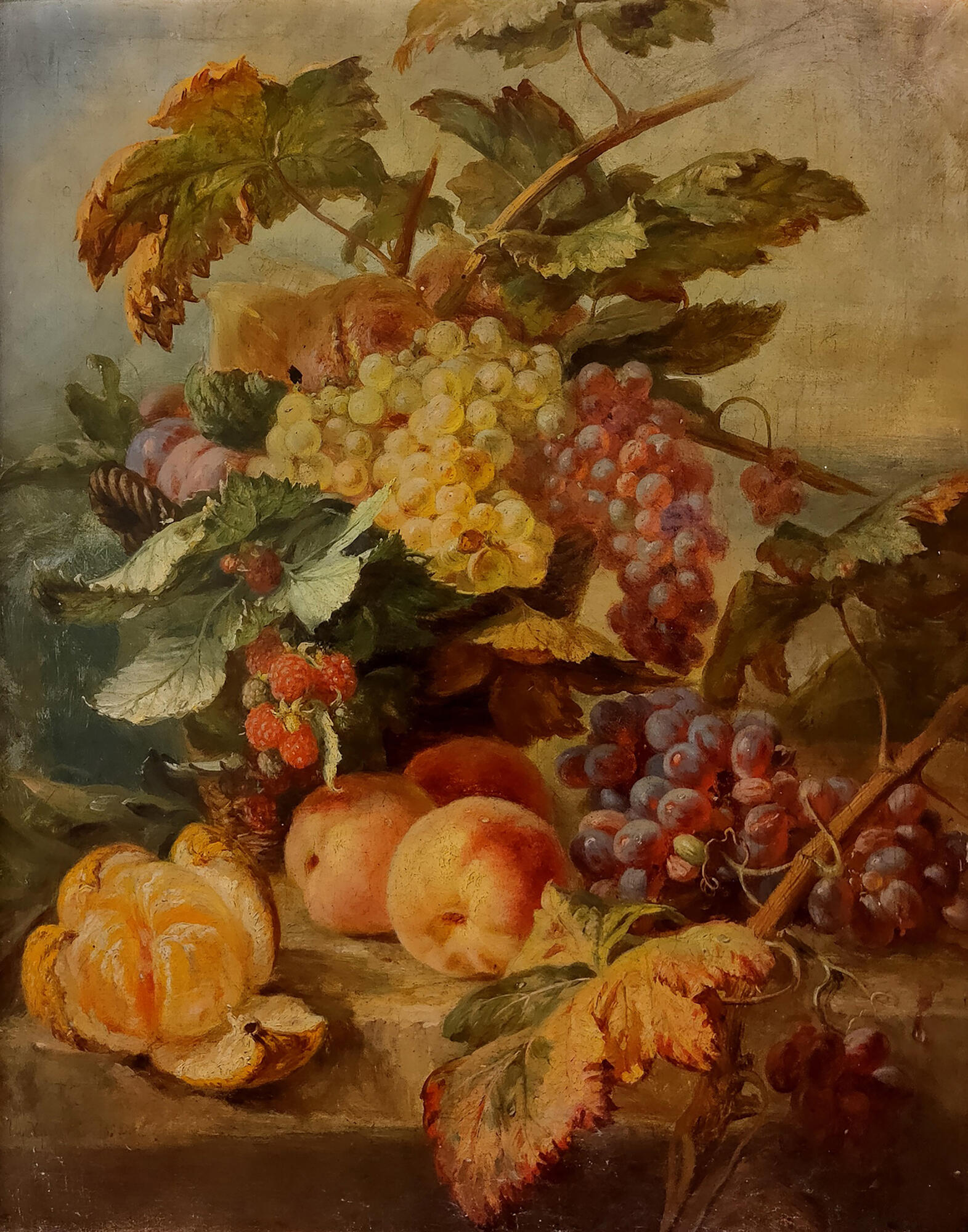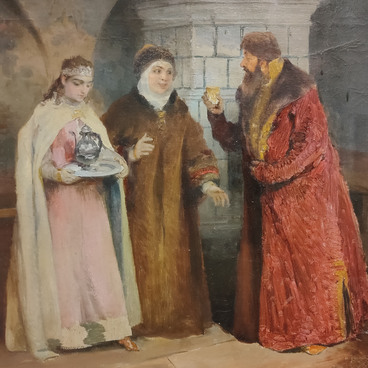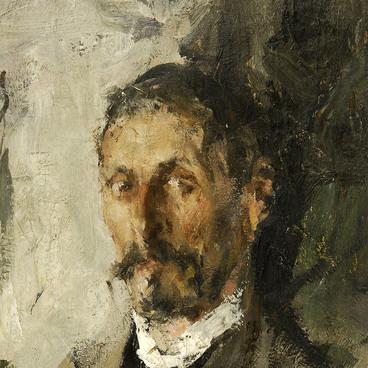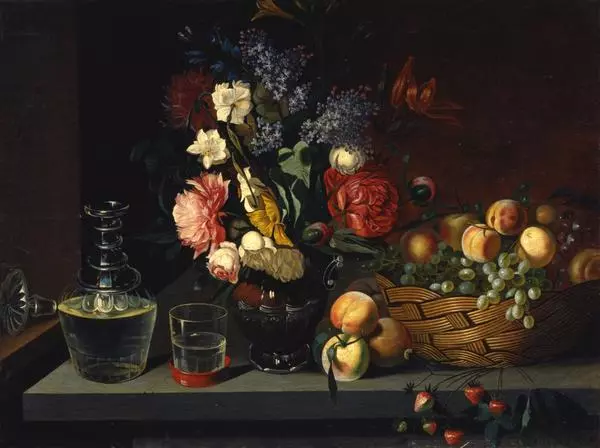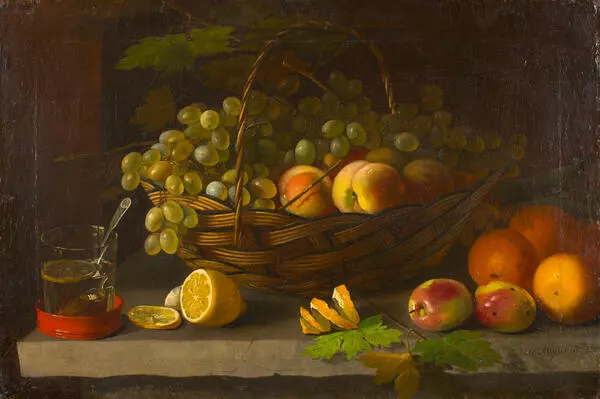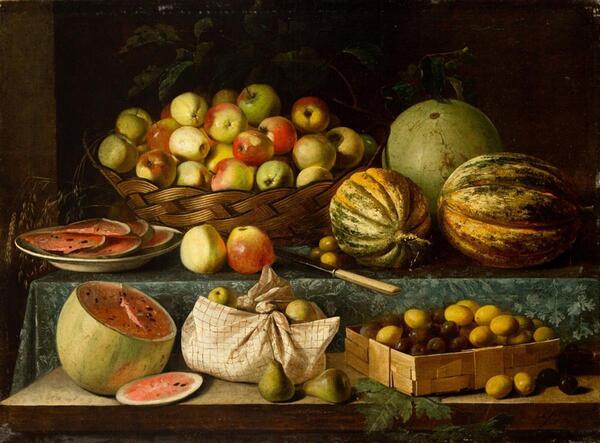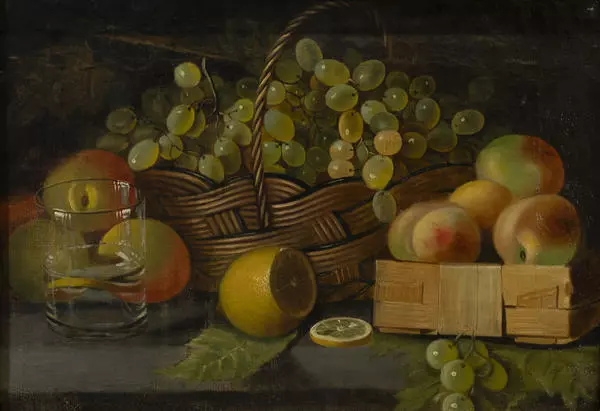Ivan Khrutskiy painted ‘Still life, ” in the middle of the 19th century. He portrayed a few varieties of grapes and grape leaves. Large grape clusters are surrounded by ripe fruit: the artist painted velvety peaches, a peeled orange, and juicy plums. The still life is complemented by a branch with raspberries.
Ivan Khrutskiy lived from 1810 to 1885. He is known in Russian art as a painter of ‘flowers and fruits.’ The artist became famous for his spectacular compositions, where fruits, berries and dishes are painted with distinct accuracy. The artist emphasized glare and textures with great care — in his paintings the roughness of peaches, the glossy juiciness of citrus fruits and the transparency of ripe grapes are clearly visible.
In the history of his art, it is said that the image of grapes were particularly important to the artist. In the 1820s, the first groups of grapes began to grow in the botanical garden of St. Petersburg — these berries were delivered to the capital’s fruit shops. Despite the high price, the artist often bought grapes for his still lifes. In the northern capital, the exotic delicacy looked unusual and luxurious, which spoke of its fullness and joy of life.
Ivan Khrutskiy gained prestige while still studying at the Academy of Arts. From early modest works of art, consisting of only a few objects he rapidly moved to much larger still lifes with more complicated compositions. The artist included wicker boxes, earthenware jugs, decanters, mouthpieces and even binoculars in his paintings. In 1839 The Academy of Arts officially recognized his talent. The magazine of the Academic Council published this entry: ‘The artist Ivan Khrutskiy, who is known in the Academy for his excellent work in portraits, landscapes, and especially paintings of fruits and vegetables has been awarded the title of Academician.’ His works of art captivated audiences and critics, which triggered a wave of replicas by the 1830s.
Researchers believe that Ivan Khrutskiy was largely influenced by the paintings of old distinguished masters of art, especially the still lifes of Dutch painters of the previous centuries, which he saw in the Hermitage. However, the Dutch embedded secret meanings in each flower or fruit. For example lemons were considered signs of deception due to their beautiful appearances and bitter flavor — whereas, Ivan Khrutskiy’s fruits and flowers did not hold any underlying meanings. Exotic fruits in his paintings are located next to currants or raspberries, which are very common in central Russia. In bouquets, garden peonies are the center of attention rather than roses. The audience loved his still lifes for their unprecedented authenticity, which almost caused gustatory sensation.
In the USSR, the work of Ivan Khrutskiy was placed on postage stamps: for example, in a series with flowers, issued in 1979, and a still life of ‘Flowers and Fruits’ of 1839 was placed on a 1 kopeck stamp.
